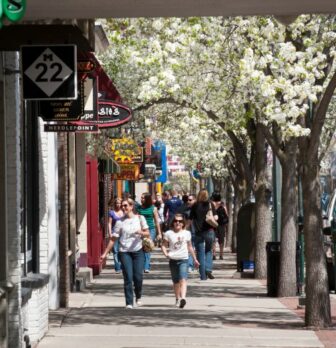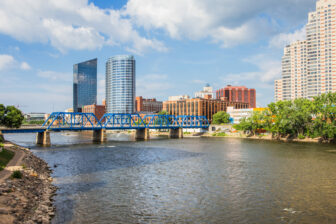Had an opportunity to talk with the Ann Arbor City Council about the economic future of the city. (For an excellent summary of the session see this MLive article.)
My remarks and the conversation was mainly about retaining and attracting college educated Millennials. But we also had a chance to discuss Ann Arbor being part of the Detroit metropolitan area. To me these are the two keys to whether Ann Arbor really is an economic engine for the region and state that many believe it can and will be.
You need Ann Arbor to be a talent magnet plus the ability to draw talent from the much larger Detroit metro to have the human capital base that is needed to be an economic engine. The centerpiece of my talk to the City Council is that human capital now is the asset that matters most to economic growth. Companies–particularly private sector knowledge-based enterprises–are moving to where the talent is, rather than people moving to where the jobs are. And at the moment Ann Arbor does not have a large enough pool of talent to draw from to grow at scale a robust private sector.
As I have written previously Ann Arbor has for years pursued policies that are anti both population growth and particularly residential density. Of course, that is exactly the wrong approach if you want to attract young professionals. Who are increasingly choosing, after college and before kids, to live in high density, mixed used, walkable urban neighborhoods.
The result is that Ann Arbor is not doing particularly well at retaining and attracting young talent. From 2005-2012 the number of 25-34 year olds with a four year degree or more living in Ann Arbor stayed constant at about 16,000. This compares to a 17 percent increase in the cohort nationally. By contrast Madison, the most successful university-driven economy in the Great Lakes–has seen its young talent population grow since 2005 from 22,400 to 29,700. An increase of nearly 33 percent. To be an economic engine Ann Arbor needs to be as competitive as Madison in retaining and attracting young professionals.
An advantage that Ann Arbor has that Madison doesn’t is that it is part of a metropolitan area of about five million. Economies are regional, not state or local. This is an economy where big metros are winning largely because they are where talent is concentrating. You want and need access to the largest possible pool of human capital to recruit workers from to grow at scale private sector knowledge-based employers.
Unfortunately too many people–and leaders–in Ann Arbor want the city (and county) to not be considered part of metro Detroit. Big mistake! And to make matters worse the State of Michigan has just announced their take on regions and it separates Ann Arbor from metro Detroit. Even bigger mistake!
The State has put Ann Arbor in a region of Washtenaw, Livingston, Monroe, Lenawee, Jackson and Hillsdale counties. If this really were the region Ann Arbor/Washtenaw County employers were drawing workers from, its economy would be much smaller today and would experience slow growth going forward. Regions this small cannot take advantage of a major research university. Which, of course, is Ann Arbor’s main asset. (Think Champaign-Urbana.)
As I said to the City Council the most important ingredients to the future prosperity of Ann Arbor is if both Detroit and Ann Arbor become talent magnets. The two cities because of the preference college educated Millennials have for central city living. If they aren’t attracting young talent Ann Arbor and metro Detroit (including Ann Arbor) are going to have a hard time developing the talent pool necessary to participate at scale in the growing, high wage knowledge economy.






